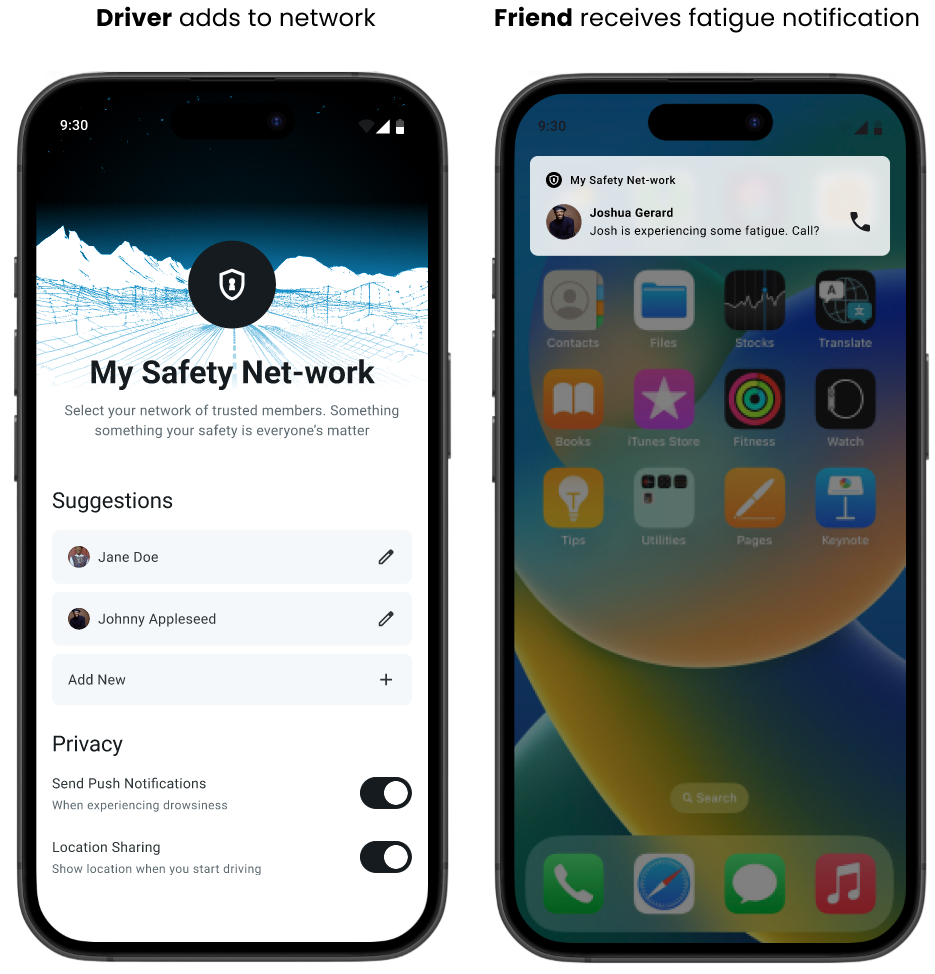Cinematic product demo




Drowsy driving is a fatal problem in the United States




We conducted user diary studies to understand what causes fatigue
These custom designed diary studies helped to reveal unforeseen day-to-day routines that may be resulting in fatigue.

...and surveys to pin point which techniques help prevent it
Our survey design, on the other hand, revealed self-reported input on effective fatigue-prevention strategies.

Research Summary
The combination of these two studies allowed us to draw key takeaways about user demographics, behaviors, and attitudes. We used these findings to inform the rest of our design decisions.


To detect fatigue, we explored open-source optical sensing solutions from Google Labs
With optical sensing as the primary sensor, we also identified other IOT components as necessary outputs: vibration, sound, voice, and Bluetooth.




Solution: 3-Stage Intervention
We devised a fatigue detection system that intervenes in 3 progressively more intense measures for waking the driver from fatigue.







Stage 1: Audio and Vibration Alert
Alarm sound and steering wheel vibration triggered as first stage measure.
User has to dismiss alarm on screen through slide interaction
Alarm is used twice before sensor moves on to next phase (rest stop)




Stage 2: Rest Stop Suggestion
If driver is still drowsy after alarm sounds, the system will ask if they would like to take the next rest stop.
System provides direction to next rest stop via GPS.
System provides information on rest stop: Food, bathrooms, etc.




Stage 3: Phone Call Push Notification ⭐
If driver is still drowsy, the system sends a notification to a trusted contact of the driver.
Driver adds contact on My Safety Net-work app.
Options to share location to contact or send push notifications when drowsy driving is detected.




